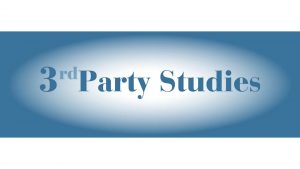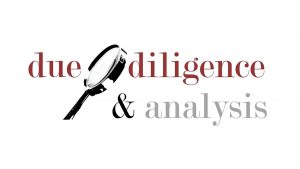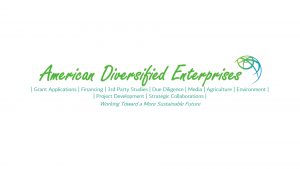American Diversified Enterprises outlines the ‘Lego-Set’ approach to preparing applications and financial presentations.
Every individual and entity that you approach to obtain funds to advance a new technology or project will want to know about your project, initially in summary form then, if that sparks interest, in great detail.
No matter whether you are approaching a commercial or private lender for a loan, an individual or equity firm for an investment, a government agency for a grant or loan guarantee, preparing a stock offering, or seeking financing through another source, you have to provide virtually the same information to each source of investment and financing.
Moreover, this is the same information you will need to advance your project through construction, startup, and deployment.
Once this information has been assembled for one purpose – say for a government grant or loan guarantee – it can be used over and over by adjusting the information that was compiled for one purpose to meet the needs and requirements of another purpose.
This is why American Diversified Enterprises calls this the ‘Lego-Set’ approach to preparing applications and financial presentations.

The information compiled for one set of requirements can be taken apart, revised, adapted, and re-assembled to fit the requirements, preferences, and requests for another source of funding – just like a Lego set.
No expense or effort in doing this is wasted – even if you apply for a grant and are unsuccessful in securing the grant – since these materials can be developed one time, in parallel with the other pre-construction requirements to advance your project.
This provides you with the opportunity to give these materials the time and attention necessary to perfect and hone them to make them as effective, compelling, and complete as they can be.
The more effective, compelling, and complete they are, the better your chances will be of attracting investors, securing grants, and obtaining other sources of financing.
The 16 elements of a successful application and financial presentation
Introductory materials
- Teaser – preferably no more than a few paragraphs
- Executive summary (or concept paper for government grants); two to five pages
- Pitch deck (PowerPoint); no more than 15-20 slides
Key elements
- Business plan summary (ten pages), including a summary of management’s experience, capabilities, and previous experience with similar endeavors and projects
- Confidential Information Memorandum (CIM) or Private Placement Memorandum (PPM), if required and appropriate, i.e., if part of a merger or acquisition (M&A) in a sell-side engagement to market a business to prospective buyers a PPM, or if part of an offering to prospective investors when selling stock or another security in a business, a CIM
- Overview of financials (five to ten pages), including:
- Financial model;
- Sources and uses and capital expenditures;
- Projected after-tax internal return on investment (IRR);
- Tax credits (type and amount, if available);
- Current balance sheet and year-to-date income statement (not more than 90 days old);
- Borrower financials (audited or, at least accountant prepared);
- Documentation showing money spent to date;
- List of equity holders and amount of equity held, current (not more than 90 days old) personal and/or corporate financial statements of any guarantors; and
- Borrower, equity holder, and company credit reports (not more than 90 days old).
- Technical information summary
- Description of current market value of collateral (including method of determining collateral value)
- Summary of raw material and feedstock supply agreements and sale/offtake/power purchase agreements (letters of intent, or LOIs, are all that are required)
- Status of project site (owned, leased, under option)
- Summary of feasibility study, including risk assessment
- Summary of technology assessment and/or independent engineer’s (IE) report
- Summary of resource, health, and environmental impacts
- Summary of community benefits
- Legal and regulatory approvals (status of requirement permits/status of other legal and regulatory requirements, if any)
- Appendix, with:
- Full business plan (85-95 pages maximum);
- Financial information;
- Technical information;
- Critical path agreement status;
- Schematics and sketches (and, if appropriate, process flow diagrams and material and heat balances);
- Appraisals (if applicable and if available);
- Copies of raw material/feedstock/supply and sale/offtake/PPA LOIs and/or agreements;
- Feasibility study (including economic, market, technical, new technology if appropriate, financial, and management feasibility and risk assessment);
- Gaant chart showing the project schedule and milestones;
- Independent engineer’s technical assessment/report;
- Environmental assessment addressing all 20 elements required for a US National Environmental Policy Act (NEPA) review and Phase 1 environmental site assessment;
- Copies of legal and regulatory approvals;
- Leases, option to purchase agreements, or site ownership confirmation;
- Status of permits (chart);
- Front-end engineering agreement;
- Intellectual property/license agreements;
- Engineering, procurement, and construction (EPC) agreement;
- Operating and maintenance (O&M) contracts;
- Long-term contracts for materials, components, and equipment; and
- Warranties, performance guarantees, and risk/loss insurance.

While many US federal grant applications have space limitations and the introductory materials you send a lender or investor also initially must be limited in scope and length, having the 16 presentation elements available for backup and reference works to your advantage:
- It will improve your scoring and chances of success with US federal funding programmes;
- It answers most of the questions a lender or investor will ask and provides independent analysis and evaluation of your project;
- It provides a clear signal to lenders and investors that you know what you are doing and are ready to go;
- It makes available all the materials that may be necessary to make a funding decision; and
- It improves your chances that the decision will be made in your favour.
Three tips on how you can improve your chances of securing financing
Tip one: Consider the challenges in securing government funding
In doing so, you face three challenges:
- First, you must find the programme or programmes that will support the development of your technology, project, or product – out of the more than 15,000 US federal grants, loans, loan guarantees, research and development and incubator programmes, and tax incentives available from federal agencies and the more than 1,000 opportunities available from the 50 states;
- Second, you must meet the requirements that are necessary to apply for and receive funding; and
- Third, you must avoid the mistakes that disqualify as many as 72% of the applications that are submitted. Close to 20% of applications are pre-screened out and never read due to seemingly small details that have been overlooked or not followed. Another 52% are disqualified due to other flaws in the application.

Of the remaining 28% of applications, only those with the strongest projects that meet all of a programme’s funding criteria and score highest are selected for funding. Those with lower scores and good-but-not-good-enough applications are passed over.
These mistakes are time-consuming and costly. They also are completely avoidable.
Both substance and presentation are key to winning funding, whether you are seeking funds from a government agency, lender, investor, or another source.
Tip two: How to make the best impression
The materials that make up a successful financial presentation must:
- Zoom in on the presentation’s fundamental goals – meeting requirements and getting the reader to make a positive decision to invest, award a grant, or lend money. Thus, the materials should:
- Be designed to influence the readers’ and reviewers’ memories;
- Be built around an awareness of how information gets into memory;
- Be based, not on pie-in-the-sky assertions and flowery statements, but on solid data that can be provided as a reference or attachment that is, preferably, backed up with independent feasibility studies and technical assessments; and
- Include a specific call to action.
For these reasons, it is important that:
- The materials adequately address your objectives and needs;
- The materials have a consistent format and theme throughout that tie them together, complement your information and data, and distinguish your presentation materials from the crowd of look-alike, run-of-the-mill presentations whose messages can blur together;
- The theme/format uses colour effectively and subtly; includes headlines, taglines, small blocks of text, text boxes, photographs, illustrations, infographics, and other subtle, tasteful typographic and graphic devices to break up text, highlight numbers, and lead the reader’s eyes to key elements of the presentation in a logical, one-at-a-time, easy-to-understand sequence;

- White space is used effectively to avoid clutter, font sizes are easy to read, and key ‘take away’ points stand out;
- Information is broken out into easy-to-absorb, easy-to-digest chunks;
- The materials do not have any ‘stop signs’ – pages or slides filled with small, dense blocks of text, hard-to-see graphics, illustrations, and columns of text competing for attention with no clear visual signals to lead the reader from one data point to another;
- The materials stand out, pulling the reader in at first glance, saying ‘read me first,’ grabbing attention at the onset, and holding attention throughout;
- The materials are written with your audience in mind (the reviewer who is assessing your application for a US federal grant or, for private sector funding, presented from the point of view of a borrower who understands how lenders and investors think) i.e., information and data is relayed in a reviewer-friendly, investor-friendly, lender-friendly “I know what you are looking for and here it is” manner, rather than as a company vision statement or sales pitch;
- The materials avoid the trap of overwhelming readers with too much information (less is more) and, instead, present information in ‘layers,’ leading from simple to more complex, with ‘off-ramps,’ options to obtain additional details on specific points of interest, and ‘hooks’ to make readers crave more and lead them to the next step;
- The materials include stories, analogies, visuals, examples, and repetition (but not too much repetition) to help embed your message in the reader’s mind;

- The materials recognise that the reader:
- Has limited time and a short attention span and is bombarded with competing proposals and demands for his or her attention;
- Will, on average, only remember 50% of your message after reading/seeing your presentation materials, which will drop to 25% by the next day, and 10% a week later;
- Will not make a decision immediately, but a week or several weeks after your presentation;
- The materials include key ‘take away’ points that are designed to stand out in the reader’s memory long after the presentation has been read/reviewed; and
- Adequate background information and data are available to provide satisfactory answers to key questions that prospective investors and lenders are likely to ask.
Tip three: Make a plan to move forward
There are many consulting firms that can assist you in applying for US Government agency funding and preparing the necessary financial presentation materials for private sector lenders and investors.
The American Diversified Enterprises’ family of companies provides many additional services than other companies due to their specialised assistance and subject matter expertise in multiple disciplines:
 American Diversified Energy specialises in helping companies prepare:
American Diversified Energy specialises in helping companies prepare:
- Applications for US federal grants and loan guarantees;
- Responses to Requests for Proposals (RFPs);
- Business publications, including business plans and annual reports; and
- With an emphasis on presenting a company, its technology, and its project(s) in the most compelling way possible.
 Project Financing Assistance (PFA):
Project Financing Assistance (PFA):
- Provides guidance in preparing project financing documentation Executive summary (or concept paper for government grants) – two to five pages;
- It is headed up by a former manager of two equity firms, one in the US and one in the UK, and principal in two other equity firms, again one in the US and one in the UK;
- His experience in watching more than 60% of the requests that were received for financing fail to move past their initial investment committee reviews due to inadequate materials and poor presentation, has been incorporated into PFA’s guidelines for preparing project financing documentation to catch the attention of reviewers and avoid rejections for these reasons.
 3rd Party Studies prepares independent, third-party:
3rd Party Studies prepares independent, third-party:
- Feasibility studies;
- Environmental assessments;
- Technical assessments and reports;
- Energy audits;
- Risk analyses; and
- Construction, economic, financial, management, and project planning assessments.
 Due Diligence & Analysis provides:
Due Diligence & Analysis provides:
- Financial verification and evaluation as well as calculations of the risk of lending to a potential borrower;
- Technical, financial, construction, and project planning due diligence: investigations, certifications, audits, and reviews that are performed to confirm that all material facts and details of a matter under consideration are accurate, complete, and clearly presented;
- Reviews and audits to verify the data, conclusions, and successful completion of each Technology Readiness Level (TRL) during the testing, validation, scaleup, and readiness for commercialization of new technologies, processes, and materials.
 In addition, American Diversified Enterprises’ managing director, CJ Evans, co-founded an advocacy organisation in 2019 – the Alternative Fuels & Chemicals Coalition (AFCC) – in collaboration with a Kilpatrick Townsend & Stockton principal and project financing and energy attorney.
In addition, American Diversified Enterprises’ managing director, CJ Evans, co-founded an advocacy organisation in 2019 – the Alternative Fuels & Chemicals Coalition (AFCC) – in collaboration with a Kilpatrick Townsend & Stockton principal and project financing and energy attorney.
The advocacy organisation, which is one of American Diversified Enterprises’ strategic collaborations, is now the second largest bioeconomy lobbying organisation in the US with 150+ member companies that employ more than 600,000 people and generate more than $350bn in annual revenues.
AFCC:
- Lobbies Congress each year to secure – and, where possible, increase – the funding for US federal programmes that support the bioeconomy through the appropriations bills passed by the US Congress each year;
- Advocates for US federal policies that advance the development, deployment, and expansion of alternative fuels (with an emphasis on sustainable aviation fuels), renewable chemicals, and biobased products, and mitigate the climate crisis; and
- Represents its members’ interests in the US Congress and with US federal agencies.

Altogether, the American Diversified Enterprises’ family of companies provides subject matter expertise to assist in:
- Developing and launching new technologies;
- Finding funding opportunities;
- Raising capital;
- Preparing annual reports and attention-getting business publications;
- Responding to RFPs (Requests For Proposals);
- Submitting bids;
- Capitalising on emerging trends;
- Identifying new business opportunities;
- Conducting feasibility studies;
- Preparing risk assessments;
- Carrying out environmental assessments;
- Performing due diligence;
- Providing engineering support;
- Creating financial models;
- Preparing financial presentations;
- Writing business plans;
- Building business cases;
- Performing market analyses;
- Assisting with the development and commercialisation of new technologies;
- Navigating state and federal requirements;
- Cooperating with government agencies;
- Influencing policymakers; and
- Taking steps to mitigate climate change.









